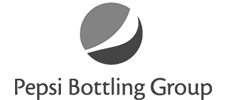
Professional Access Programmers - building and fixing databases.
We've developed Access Databases in Baltimore for Simpson Strong Tie (batch processing database application and quality/testing application, Fortune 500 manufacturer) and Senior Smart (services and supplies to the senior care market for the State of Maryland) and the University of Maryland.
These are professionally built databases with advanced navigation forms, criterion for reports, and normalized table structure.
Here are some clients we have helped in Baltimore
Client
Project Description
Modern Foundations
Modern Foundations builds commercial foundations
Simpson Strong-Tie Co. Inc.
Built New Batch process tracking Access database to manage the production and shipping of batches. Simpson Strong Tie is a Fortune 500 company that strategically uses Access Database to manage department activities
Epitome Systems
Network Engineering Firm in Columbia, Maryland.
They subcontracted us to Fix an Access database for determining hospital emergency room time differentials for their client Bon Secours in Baltimore, MD.
This Access database was developed to track efficiency of the emergency room operation at Hospitals for Bon Secours. The various stages of a patient's visit are tracked and the minutes recorded for moving through each stage of the emergency room visit.
This database uses extensive Forms that have built to provide the quickest data entry possible for the user.
BonSecours Baltimore
Fix Access database for determining hospital emergency room time differentials



